Prehistoric hut gives clues to ancient Alp life
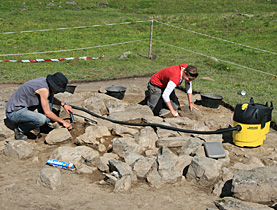
Archaeologists in a remote region of Switzerland have excavated the ruins of the oldest hut in the Alps, a prehistoric discovery that dates back nearly 3,000 years.
The find in the Silvretta mountains near the Austrian border gives scientists the oldest architectural proof that early Iron Age shepherds spent summers living among the rich alpine grasses, tending to herds and using milk to make cheese, in a way much like farmers today.
“It is perhaps a bit of a cliché for Switzerland, but what is interesting is just how old it is,” said Thomas Reitmaier, an archaeologist from Zurich University who led the team. “There are lots of interesting spots around here.”
Carbon dating shows the hut at 2,264 metres in canton Graubünden was being used as early as 800 BC, hundreds of years before the Roman invasions, when pile dwellings dotted Switzerland’s lowland lakes and people were of pre-Celtic tribes.
Not much remains of the hut today but Reitmaier and a team of university archeology students have spent the past three years meticulously excavating its foundation, a dry-stacked stone structure that held wood walls and a roof. The centuries had left the site overgrown with thick mud, roots and grasses. The hut could have held four to six people.
“We’ve known that people have used these summer pastures for thousands of years but the oldest proof of an actual shelter up until now is medieval,” Reitmaier said. “Now we have a site that goes much further back.”
The search
The discovery is just one of more than a dozen finds that Reitmaier and his team stumbled across during a project to find signs of ancient settlements in the Alps.
“We know of sites, of actual structures, from this time period all around the Alps but nothing up in them,” Reitmaier said. “We know people had to be using the high pastures, so we set out to find architectural proof that might be out there.”
Archaeologists had already documented numerous prehistoric settlements in the Lower Engadine Valley, particularly near Ramosch, which is warmer, drier and more fit for habitation than other nearby valleys.
It would make sense that those ancient dwellers would have pushed into the high alpine regions in summer, Reitmaier said. Linguists say that a prehistoric name for one of the areas, Fimba or Fimber, even means “fattening” or “rich”, a reference to the good grasses for livestock.
Starting in 2007, Reitmaier set out to canvass the landscape north of those early Iron Age settlements by following valleys into high pastures near modern-day Austria. Using binoculars, Reitmaier and his team looked for places in the high country where people might have wanted to live.
“We saw something from very far away where the ground looked different than the rest of the area,” he said. “We weren’t sure at all what it was but I thought perhaps it could be something. So we went and dug a test trench. The results were surprising.”
More out there
The team quickly found charcoal and sent a sample back to the Federal Institute of Technology in Zurich for testing, which revealed the hut had been in use nearly 3,000 years ago.
The site sits just a two-minute walk from another modern-day hut, the Heidelberg Hut, built in 1889. A trail has been running next to the site for years, but the ruins were so hidden that no one knew it.
“I’m not surprised that people were living up here but the location they picked is surprising,” said Paul Huber, whose family runs the Heidelberg Hut. “If I were here 3,000 years ago, I would have lived on the other side of the pass where it would have been more open.”
Subsequent excavation work uncovered another layer of ash about ten centimetres down, suggesting that at some point the hut had burned. It is unclear whether that is the reason the occupants abandoned it.
This summer the team uncovered clay potsherds. They also discovered other archaeological sites, including a fire pit that may stem from the fifth millennium BC, a time when people were just transitioning from hunting and gathering to domesticating livestock.
A freak snowstorm in July recently left the site covered in fresh snow. Reitmaier, wet and dirty from a week of working in the trying conditions, pointed out the area the team had uncovered – a wide, shallow trench with rocks arranged in a circle. The archaeologists have left half of the site untouched for future scientists.
“You can see with the weather why it would be important to have a hut up here,” he said, as blinding snow pushed a herd of cows down the valley. “For sure there are older huts in the Alps. One day someone will find one from the Bronze Age. It’s out there. There’s no doubt.”
Tim Neville near the Fimber Pass, swissinfo.ch
The ruins of the ancient alpine hut discovered in the Silvretta mountains near the Austrian border is just one more puzzle piece that archaeologists can use to assemble a picture of what life was like thousands of years ago.
Botanists also worked on the site to help determine what the climate could have been like when the hut was in use. “It’s clear that humans have had an impact on the landscape for a very long time,” said Thomas Reitmaier, an archaeologist at Zurich University. “We think of these alpine pastures as being very beautiful but they’re really the result of man.”
The hut found practically on the back steps of Switzerland’s Heidelberg Hut, south of Ischgl, Austria, sits on a windswept, treeless area that leads up to the Fimber Pass. The site was most likely in the woods when it was built, Reitmaier says, because fossilised trees dating to around the same time have been found preserved in bogs nearby. People have since chopped down the trees for pasture land, building homes and making fires.
Today the site is most easily reached via the Austrian side, where a rough road winds up to the hut. In ancient times, however, people would have most likely crossed over the Fimber Pass from the Swiss side – a four-hour walk – because the Swiss valleys held known settlements. The Austrian side had none.
The land on the Swiss side, however, is too steep for grazing, so early herdsmen would have needed to push higher into the mountains to find suitable regions. This would have left lower fields open for growing grains safely away from trampling cows.
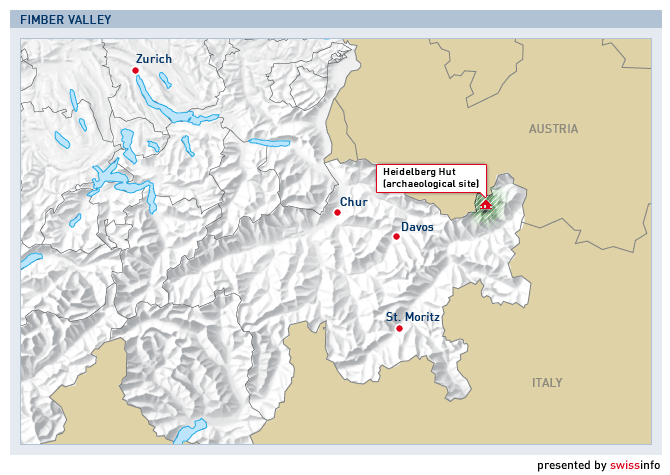

In compliance with the JTI standards
More: SWI swissinfo.ch certified by the Journalism Trust Initiative








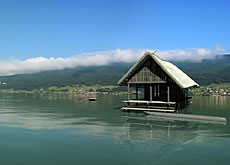
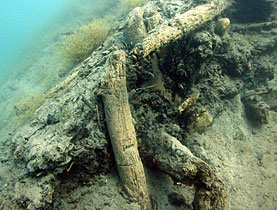
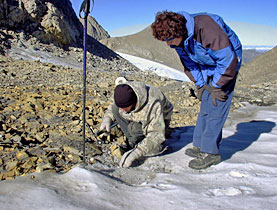

You can find an overview of ongoing debates with our journalists here . Please join us!
If you want to start a conversation about a topic raised in this article or want to report factual errors, email us at english@swissinfo.ch.